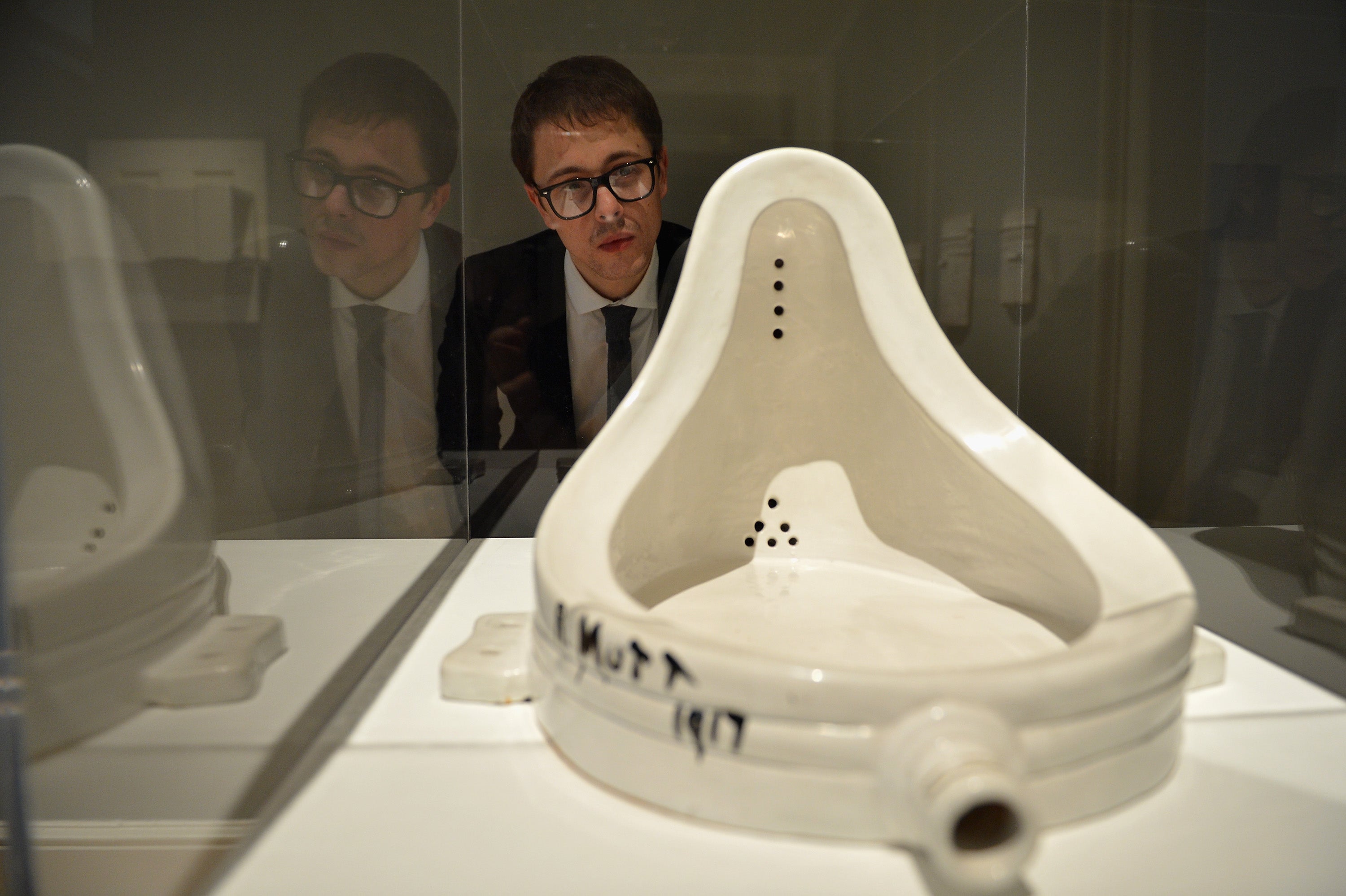Why are right-wingers so afraid of modern art?
There’s a real irony in the fact that when some conservatives say we should reject Modernism and return to the ideals of the past, they’re often talking about work that predates the First World War


Your support helps us to tell the story
From reproductive rights to climate change to Big Tech, The Independent is on the ground when the story is developing. Whether it's investigating the financials of Elon Musk's pro-Trump PAC or producing our latest documentary, 'The A Word', which shines a light on the American women fighting for reproductive rights, we know how important it is to parse out the facts from the messaging.
At such a critical moment in US history, we need reporters on the ground. Your donation allows us to keep sending journalists to speak to both sides of the story.
The Independent is trusted by Americans across the entire political spectrum. And unlike many other quality news outlets, we choose not to lock Americans out of our reporting and analysis with paywalls. We believe quality journalism should be available to everyone, paid for by those who can afford it.
Your support makes all the difference.Art is a weird industry. It’s one of the few disciplines where people become absolutely incensed at the implication that they might not know everything about it, even when they have no real interest in it.
People will claim that a particular piece of art is pointless, or pretentious, or stupid, with all the confidence of somebody walking up to an orthopaedic surgeon and telling them that it’s idiotic that there are so many different names for bones. “Hand bones, leg bones, what’s the difference?” they cry. “Bones are just sticks that keep our meat from sloshing around. Why do you eggheads always have to make everything so complicated?”
Nothing riles people up more than modern art, and nobody gets more riled up about modern art than conservatives. It feels like every few weeks some right-wing influencer will have a hot take about some piece of abstract expressionism or a readymade sculpture, declaring that they’ve figured it out, they’ve cracked the code. Modern art is a scam, and they’re a genius for realising it.
Most recently it was Daily Wire commentator Michael Knowles, who committed the Art Twitter equivalent of putting water on a chip pan fire by tweeting an example of Picasso’s earlier, more realist work next to an example of his later cubism and asking “Why would a guy who could paint the picture on the left choose to paint the picture on the right?”
Knowles was just riding the coattails of a similar series of tweets that had gone viral a few days earlier, in which a “classical educator” criticised Marcel Duchamp’sFountain (1917) – essentially a urinal turned on its side and signed with a pseudonym – declaring it not “real art” and saying that it was “time to take back the culture from degenerates”.
This one in particular upset people, not least because the use of the word “degenerate” recalled the famous 1937 Degenerate Art exhibition organized by the Nazi party to mock similar works.
About a week earlier, Prince William found himself at the centre of a related debate after claiming that although he loved the Italian renaissance, modern art had put him off his art history degree, often falling asleep during lectures that covered the topic. You can probably go on Reddit right now and find five or six threads full of armchair experts congratulating each other for “figuring out” that the art industry is a money-laundering conspiracy for rich people.
I actually sympathise with the right’s position on this, at least to a certain extent. My PhD looks at parallels between literature and examples of what you’d call “modern art”, and I spent several years teaching and lecturing on the subject, but when I was younger I was a card-carrying member of the “my four-year-old could paint that” society. I only forced myself to engage with art in college because I started dating an art student who was a lot smarter than me, and I had a bit of a complex about it.
During that time, while I was doing my best to educate myself about a subject I previously had no real interest in, I learnt three things that made me change my approach to modern art. The first was that “modern art” is kind of a useless term, and that people use it to refer to works that span more than a hundred years. There’s a real irony in the fact that when some conservatives say we should reject Modernism and return to the ideals of the past, they’re often talking about work that predates the First World War. It’s also pretty satisfying to know that artists like Marcel Duchamp are still getting under the skin of all the same people they were in the 1910s.
Secondly, what people call “modern art” is largely conceptual. The reason that so much of it is difficult to parse is that most of it is really just proof-of-concept of an idea. Most artists aren’t trying to create something that’s visually pleasing, or accurate to life, because why would they? We figured those techniques out hundreds of years ago, and besides, we have the internet now. If you want to see what a naked person looks like you can just google it.
Rather, it’s easier to think of a piece of so-called modern art the same way you would a petri dish under a microscope, or a data readout, or the prototype for an invention. It won’t mean much to you unless you put in the legwork first.
And that brings me to my third, and perhaps most crucial, point: nobody is asking you to learn – or talk – about art. It’s fine to just not understand something, without resorting to calling that thing phoney, or a scam, or illegitimate in some way. It’s a novel concept in the information age, but nobody is expecting you to be an expert in, or even to have an opinion on, everything.
I think that’s part of the reason that modern art is such a slam dunk talking point for conservatives. Understanding modern art requires you to go against your instincts and tell yourself that even though this supposed “sculpture” just looks like a urinal, there’s actually a lot more to it. But in order to understand that, you first have to go out, read a few books, and put your initial feelings of distaste aside. Would you rather do that, or would you rather just go with your gut and hate the thing instead?
To keep up to speed with all the latest opinions and comment, sign up to our free weekly Voices Dispatches newsletter by clicking here
Conservatism is mired in that need for supposed “common sense” solutions to complex problems. It’s why the core message of Brexit fitted on a bus. It’s why the anti-trans movement is so difficult to counter. It’s why Trump absolutely killed it on Twitter. Modern, conceptual art is emblematic of that need for nuance and depth of thought that modern conservatism rejects. “We’re sick of experts”, remember?
Likewise, conservatism is deeply suspicious of “modernity” as a concept, even when that so-called modernity predates the creation of Northern Ireland. It fetishises more traditional forms of art just like it fetishises everything from the past (even when their nostalgic understanding of the past doesn’t really line up with history as it occurred). Modernity is a threat to those traditions; a sign of an evolving tomorrow instead of a perfectly preserved yesterday.
Art is difficult. You can take or leave it, but if you’re going to take it, at least try to take it seriously. Rather than relying on the idea that an entire industry full of experts is trying to trick you for an as-yet unexplained reason, maybe take an extra second to entertain the idea that maybe there are some things in this world that you don’t fully understand yet, and that instead of getting upset about that, maybe it would be fun to try and find them out.
Join our commenting forum
Join thought-provoking conversations, follow other Independent readers and see their replies
Comments